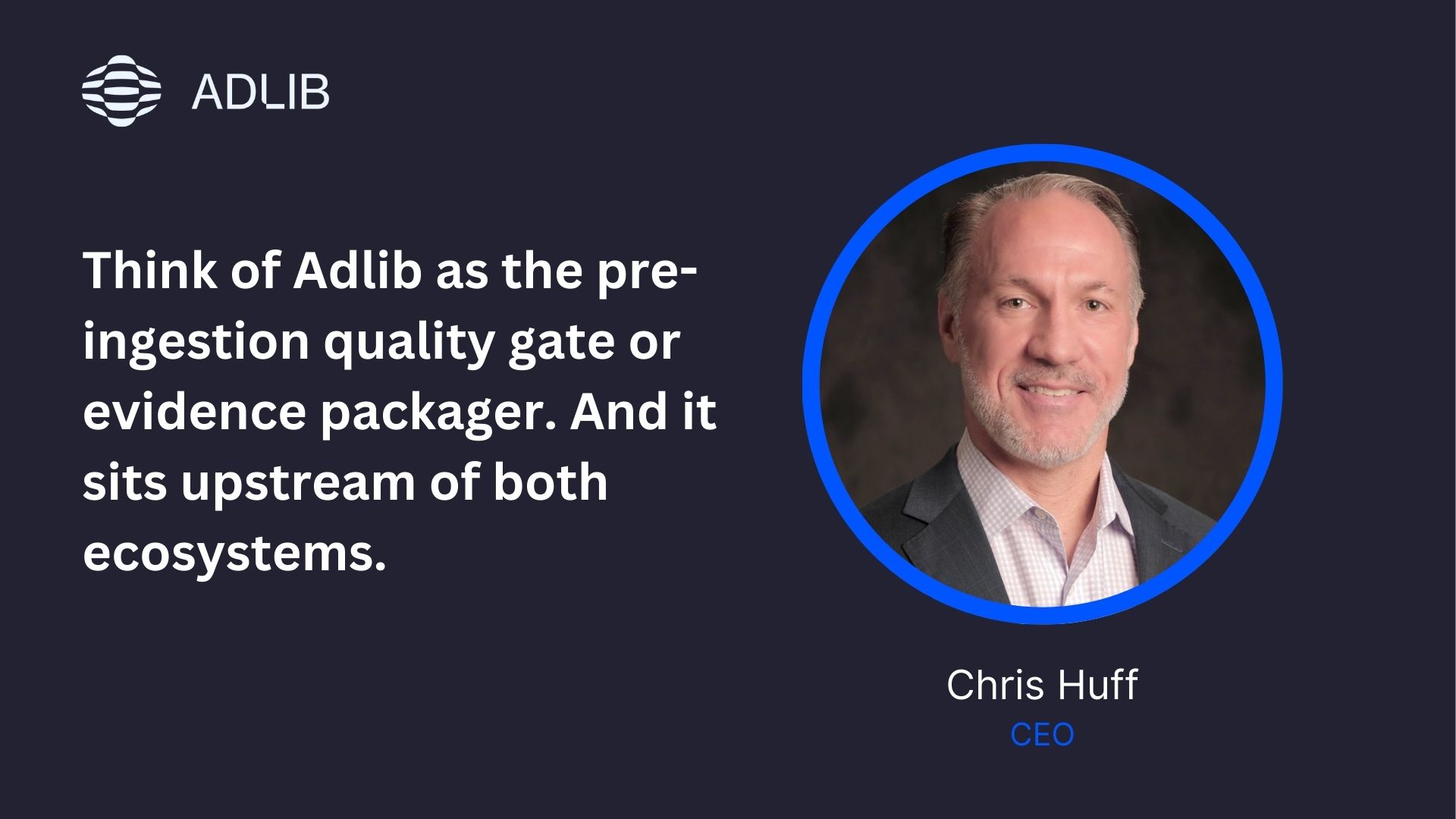Veeva + IQVIA: Pipes are open, but can you trust your data?


Interoperability isn’t trust. Adlib makes Veeva × IQVIA content evidence-grade and AI-ready, cutting rework and accelerating eTMF, RIM, Safety, and MLR.
Veeva and IQVIA unveiled global partnerships spanning commercial and clinical, and the complete resolution of all pending legal disputes. The announcement promises that customers can use each company’s software, data, technology, and services together “in a simple and efficient way.” On the commercial side, the deal includes master data and software third-party access (TPA) agreements that explicitly allow IQVIA data to run in Veeva Network (MDM), Veeva Nitro (analytics), and Veeva AI; on the clinical side, IQVIA joins Veeva’s CRO Clinical Data Partner program and can execute trials on Veeva Clinical Suite, including EDC, with promises of accelerated builds and study locks.
We sat down with Adlib’s CEO Chris Huff and CPO Anthony Vigliotti to unpack what actually changes for teams already running both… and what still doesn’t.
CHRIS: Two big things. First, the legal cloud’s gone. Both sides dismissed the disputes “with prejudice,” so that’s done. Second, it’s now in writing that customers can use each other’s software, data, and services: IQVIA data inside Veeva Network, Nitro, even Veeva AI and IQVIA running on Veeva Clinical Suite, EDC included. Net-net: faster TPAs, fewer procurement loops, and confidence your stack is “allowed.”
CHRIS: For buyers? Yes. When interoperability’s a given, vendors have to compete on outcomes: time to first patient in, first-cycle submission quality, MLR cycle time… the whole list. And the convo moves from “can we connect this?” to “are the inputs trustworthy enough for these systems to perform?”
ANTHONY: The big relief is policy friction. Getting IQVIA data into Veeva used to mean TPAs and lots of interpretation. Now there’s a consistent, “fast, easy” path. What it doesn’t fix is content quality and structure. These platforms run on documents as much as tables. If those arrive as scans, raster images, mismatched templates, no provenance or accessibility, then your shiny stack is still eating junk. The pipes are open, but the trust gap remains.

CHRIS: Think of Adlib as the pre-ingestion quality gate or evidence packager. And it sits upstream of both ecosystems. Whatever hits you, 300+ file types, images, scans, we normalize, enrich, extract, and validate. Then we deliver clean, compliant outputs to Veeva Vault apps and into IQVIA. If the new interoperability gives you the highway, we clean the fuel.
CHRIS: Because in regulated workflows, “almost perfect” doesn’t cut it. OCR and IDP solutions are fine for invoices, but they struggle with scientific content, complex tables, CAD, and raster. And accuracy alone isn’t the bar here. You also need traceability (who changed what, when), consistency (templates, headers/footers, and page labels), accessibility (are the PDFs searchable and tagged?). Miss any of those and you pay what I call the trust tax, which is rework, exceptions, and delays. So while the Veeva and IQVIA deal makes sharing simple, Adlib makes what you share dependable.
.jpg)
CHRIS: It definitely puts a spotlight on clean, governed inputs. When content and metadata are trustworthy and consistent, Veeva’s stack and IQVIA’s analytics (Agentic AI included) perform, and they perform well. So now that policy friction is down, your biggest lever now is document infrastructure. Invest in pre-ingestion quality and you’ll feel it everywhere.
ANTHONY: Actually, pretty simple flow:
- Watch folders, email, Vault-bound submissions, or CRO handoffs land in an Adlib pipeline
- Adlib standardizes, enriches, extracts, and validates
- Push structured docs and metadata into Veeva via REST/bulk loaders and adhere to acceptance criteria
- And then, provide IQVIA publishing and analytics teams with clean inputs and machine-readable payloads.
.png)
ANTHONY: Ok, so typical lift we see when you gate real-world content is 30 to 40% increase in first-pass acceptance on eTMF. About 20 to 40% reduction in eCTD defects and time-to-ready. It varies, so my advice is to pilot, measure, and templatize.
CHRIS: So to recap, Veeva and IQVIA just solved the sharing and access problem. I call it the “pipes.” What’s left is the input fidelity problem, or the “water.” We briefly discussed how Adlib is that missing but critical third element that balances the system: evidence-grade content in, compliant data out, and AI that your teams can actually trust. That’s the trifecta: Veeva for system of record and workflows, IQVIA for data and services, and Adlib to make the whole thing run cleanly.
Take the next step with Adlib to streamline workflows, reduce risk, and scale with confidence.